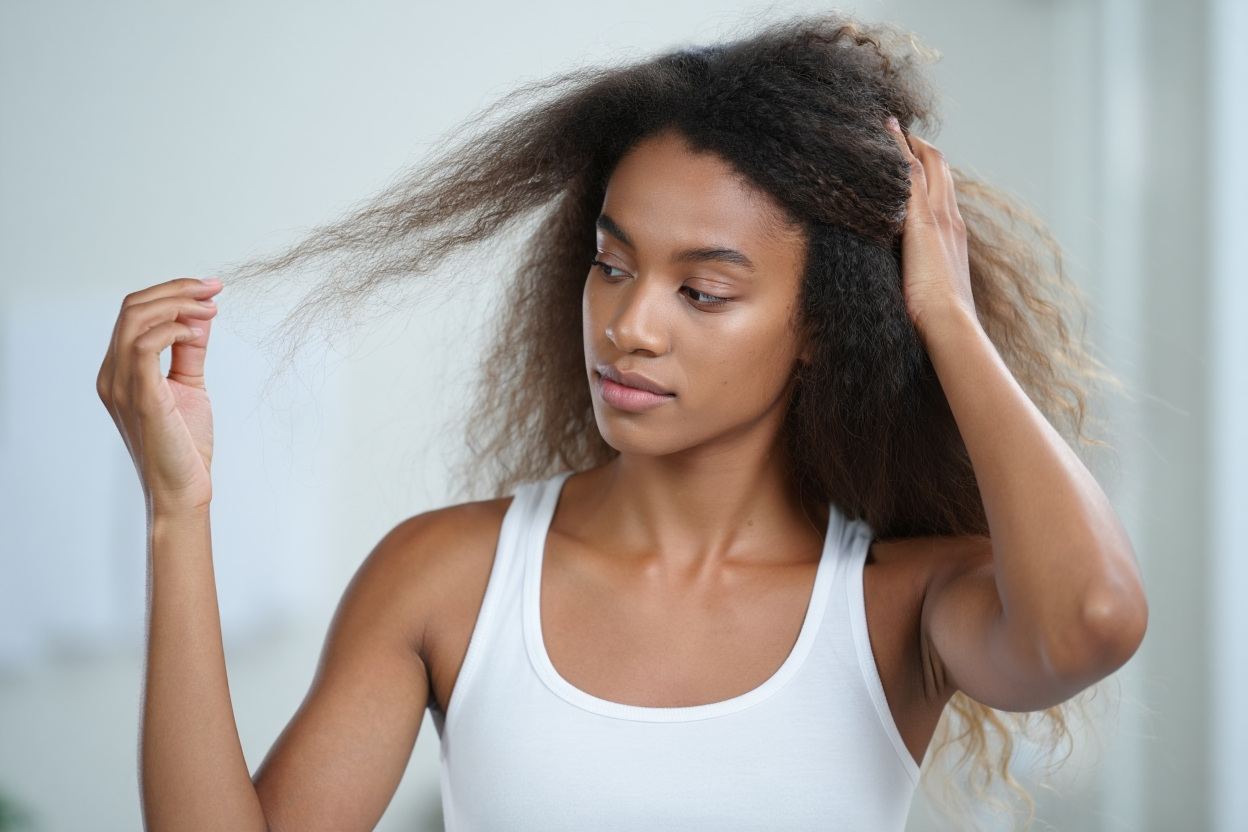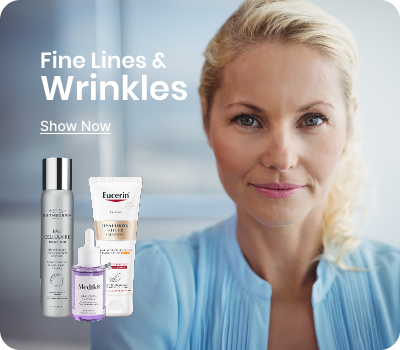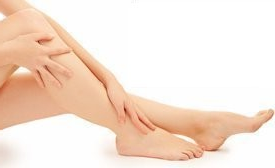
Frizz is more than just an aesthetic nuisance—it’s a signal that your hair’s moisture balance is out of sync. While some hair types are more predisposed to frizz, nearly everyone experiences it under the right conditions. Genetics, styling habits, and even climate can all play a role in the unpredictability of frizz. Understanding what triggers frizz is the first step toward reclaiming control and achieving lasting smoothness.
Taming frizz isn’t about finding a one-time miracle product—it’s about building a disciplined and consistent regimen that keeps the hair nourished, protected, and resilient. Like skincare, hair care requires thoughtful layering of the right ingredients, daily rituals, and a little patience. With consistency, even the most unruly locks can become sleek, manageable, and touchably soft. In this guide, we’ll walk through the science behind frizz, explore the most effective techniques and products, and show you how to build a personalised routine that truly works.
The Root of the Problem: What Causes Hair to Frizz
Humidity and Moisture Imbalance: The Science Behind Frizz
Humidity wreaks havoc on hair because of its interaction with porous strands. When your hair is dry or damaged, it seeks moisture from its surroundings. In humid environments, this leads to the absorption of excess water from the air, swelling the hair shaft and disrupting its structure. The result? Puffiness, misalignment, and the characteristic frizz. Understanding this physiological response is key to developing strategies that seal the hair and lock out excess moisture.
Hair Porosity Explained: How It Affects Frizz Control
Porosity determines how well your hair absorbs and retains moisture. Low-porosity hair resists moisture absorption, often causing product build-up on the surface. High-porosity hair, on the other hand, soaks up moisture quickly but struggles to retain it, leading to dryness and frizz. Medium porosity is ideal but rare. By identifying your hair’s porosity, you can tailor products and techniques for optimal moisture retention and frizz prevention.
Damage, Heat, and Chemicals: The Culprits Behind Dry, Frizzy Hair
Overuse of heat tools, chemical treatments like relaxers or colouring, and even harsh brushing can damage the hair cuticle, leaving it lifted and vulnerable. Each instance of damage creates tiny cracks in the shaft that allow moisture to escape and air to enter—an open invitation to frizz. Repairing this damage involves not only ceasing harmful practices but actively restoring the hair’s natural integrity with nourishing treatments.
Choosing the Right Hair Care Products for Frizz Control
Frizz can be a persistent challenge, but selecting the right hair care products can dramatically improve manageability, smoothness, and shine. The right products work to nourish the hair from within, seal the cuticle, and form a barrier that locks in hydration while repelling frizz-inducing environmental factors. Here’s how to build a product routine that strengthens, smooths, and protects all hair types.
Sulfate-Free Shampoos and Conditioners That Nourish Instead of Strip
Traditional shampoos often rely on sulfates—namely sodium lauryl sulfate (SLS) and sodium laureth sulfate (SLES)—to create a rich lather and remove build-up. While effective at cleaning, these harsh detergents also strip away the scalp’s natural oils, leaving hair dry, brittle, and more susceptible to frizz. In contrast, sulfate-free shampoos use milder surfactants that cleanse without compromising the hair’s protective barrier. They help retain essential moisture, prevent irritation, and maintain the hair’s pH balance.
Choosing the right sulfate-free formula can make a significant difference in the health and texture of your hair. Look for ingredients such as:
- Natural humectants like aloe vera or honey:These draw moisture from the environment into the hair shaft, boosting hydration levels without weighing hair down.
- Botanical extracts such as chamomile or green tea:These soothing antioxidants calm the scalp, add shine, and promote overall hair health, making strands smoother and more manageable.
- Moisturising agents like coconut milk or almond oil:These replenish lipids and provide a silky finish, making it easier to detangle and style frizz-prone hair.
When using sulfate-free shampoos and conditioners, consistency is key. Over time, they help repair the moisture barrier, reduce breakage, and enhance hair’s natural resilience to environmental stressors.
Leave-In Conditioners and Hair Masks for Deep Hydration
Hydration is fundamental to controlling frizz, and regular conditioning treatments are vital for replenishing lost moisture. Leave-in conditioners are lightweight, leave-on formulas that continue to nourish the hair throughout the day. They coat the strands with a hydrating layer, reduce tangling, and protect against dryness caused by wind, sun, and heat styling. For more intensive repair, weekly hair masks deliver deep-penetrating nutrients that revitalise damaged hair and help restore elasticity.
For optimal results, look for formulas that include:
- Shea butter:Rich in fatty acids and vitamins, shea butter provides deep nourishment, improves hair texture, and enhances shine without greasiness. It also forms a protective coating to lock in hydration.
- Panthenol (vitamin B5):Known for its humectant properties, panthenol draws moisture into the hair shaft, softens brittle strands, and improves elasticity, making hair more pliable and less prone to snapping.
- Keratin and collagen:These structural proteins rebuild the hair’s internal strength, smooth the cuticle, and repair damage from chemical treatments or thermal styling. Regular use enhances hair’s body and bounce.
Integrating leave-in conditioners and masks into your routine keeps hair hydrated and fortified against frizz triggers, particularly in harsh weather or after heat styling.
The Best Anti-Frizz Serums, Creams, and Oils for Smooth Results
Once the hair is clean, conditioned, and hydrated, the final step in any frizz-fighting routine involves sealing and styling. This layer helps lock in moisture, minimise flyaways, and maintain sleekness throughout the day. Whether you have fine, thick, or curly hair, the right styling product can transform your texture while offering long-term benefits.
- Serums:Typically lightweight and silicone-based, serums like those containing dimethicone coat the hair shaft, smooth down raised cuticles, and create a glossy, polished finish. They’re ideal for straight or fine hair types that require sleekness without added weight. Apply sparingly to mid-lengths and ends to avoid greasiness.
- Creams:Best suited for thick, coarse, or curly hair, anti-frizz creams deliver rich hydration and styling control. They work by forming a moisture-retaining barrier that also provides definition and minimises puffiness. Creams with natural oils and emollients help tame volume and shape curls without crunchiness.
- Oils:Botanical oils such as argan, marula, macadamia, and jojoba offer both instant smoothing and cumulative nourishment. These oils are packed with fatty acids, antioxidants, and vitamins that penetrate deeply to strengthen and protect the hair shaft. Used sparingly, they seal in hydration, enhance luster, and tame unruly ends.
The key to using styling products effectively lies in understanding your hair’s density, texture, and porosity. Always start with a small amount, distributing evenly through damp or dry hair. For added control, layer products—such as applying a leave-in conditioner first, followed by a serum or oil—to maximise moisture retention and frizz protection.
Mastering the Wash Routine for Frizz-Free Hair

Creating a frizz-free foundation starts at the very first step of your haircare routine: washing. While product selection is important, how you handle your hair during cleansing, rinsing, and drying plays a pivotal role in reducing frizz and promoting smooth, healthy strands. Small, thoughtful adjustments can significantly improve moisture retention, preserve hair integrity, and minimise unwanted puffiness or texture.
Washing Techniques That Prevent Frizz from the Start
Washing your hair should be a nurturing process—not a harsh scrub-down. A common mistake many make is piling their hair on top of their head and vigorously scrubbing, which leads to unnecessary tangling, knotting, and eventual breakage. Instead, treat your hair with the same care as delicate fabric. Start by saturating your hair thoroughly with lukewarm water to open the cuticle gently and prepare it for cleansing.
Apply a small amount of shampoo to your fingertips and gently massage it into the scalp using circular motions. This boosts circulation and lifts dirt and oils without irritating the skin. Let the lather naturally cascade down the lengths of your hair without physically scrubbing the strands—this method cleanses while maintaining the integrity of the hair shaft. Overwashing can strip the natural oils that protect and nourish your hair, so limit shampooing to two or three times per week unless your scalp requires more frequent cleansing.
The Ideal Water Temperature for Smooth, Healthy Strands
The temperature of your rinse water matters more than most people realise. While warm water helps dissolve oil and product build-up by lifting the cuticle, excessively hot water can damage the hair structure and lead to increased dryness and frizz. To finish your wash, rinse with cool or cold water. This causes the cuticle to lie flat, locking in moisture and creating a smoother, shinier surface that’s less prone to puffing or reacting to humidity. This step also helps your conditioner seal the hair shaft more effectively.
Post-Wash Care: How to Towel Dry Without Causing Frizz
The way you dry your hair after washing is just as critical as how you cleanse it. Rubbing your hair with a terrycloth towel creates friction that lifts the cuticle, promoting frizz and even breakage. Swap traditional towels for a microfiber towel or a soft cotton T-shirt, both of which are gentler on strands. Blot and squeeze your hair gently, starting from the roots and working downward, to remove excess moisture.
Avoid twisting, wringing, or tightly wrapping the hair in a towel. Instead, loosely wrap the microfiber cloth around your head or allow your hair to air dry in its natural shape. If you prefer heat tools, use a diffuser on low or medium heat to evenly distribute airflow without disrupting your hair’s natural texture. A thoughtful post-wash routine protects the hair’s structure, prevents frizz before it starts, and leaves strands soft, defined, and ready for styling.
Styling Techniques That Keep Frizz at Bay
Heat Styling Tips: Tools, Temperatures, and Protection Essentials
Heat styling can be transformative—but only when used responsibly. Always apply a heat protectant formulated with silicone polymers or hydrolysed proteins to shield the hair shaft. Choose ceramic or tourmaline tools for even heat distribution, and keep temperatures below 190°C to prevent thermal damage. Limit straightening or curling to a few times per week to allow the hair to recover.
Air Drying vs Blow Drying: Choosing the Right Method
Air drying is gentler and ideal for minimising heat damage, but it requires the right products to control shape and volume. Cream-based stylers or curl-defining gels can offer structure without stiffness. Blow drying, when necessary, should be done with a diffuser and a downward nozzle to direct airflow along the hair cuticle. Always dry from root to tip for smooth results.
Protective Hairstyles That Prevent Frizz Throughout the Day
Low-manipulation styles like braids, buns, twists, and knots shield the hair from environmental exposure and reduce daily wear. Satin scrunchies and loose pins avoid breakage and preserve the hairline. For natural textures, styles like Bantu knots, flat twists, and pineapple buns are stylish ways to lock in moisture while preventing frizz.
Everyday Habits That Promote Frizz-Free Hair
Sleep Solutions: Silk Pillowcases and Protective Night-time Routines
Friction from cotton pillowcases can strip moisture and cause breakage. Silk or satin pillowcases reduce resistance and help maintain the hair’s smooth texture. Alternatively, wearing a satin bonnet or scarf at night protects your style and prevents morning frizz. Night-time hydration sprays or light oils can also support overnight moisture retention.
Avoiding Over-Touching and Over-Brushing Your Hair
Constantly touching your hair transfers oils from your fingers and disrupts the style, contributing to frizz. Over-brushing, particularly when dry, lifts the cuticle and causes static. Use wide-tooth combs or detangling brushes on damp hair only, working from ends to roots with patience and care.
Diet and Hydration: Supporting Hair Health from Within
Hair health starts from within. Omega-3 fatty acids, biotin, zinc, iron and protein are essential for strong, shiny strands. Hydration is equally important: when the body is dehydrated, so is the hair. Incorporate leafy greens, nuts, eggs, berries, and plenty of water into your daily regimen for frizz resistance from the inside out.
Seasonal Frizz Control: Adapting Your Routine to the Weather
Summer Humidity Hacks: Keeping Frizz Down in Hot, Damp Climates
In high humidity, opt for lightweight anti-humidity sprays and sealants. Avoid heavy oils that can become greasy in the heat. Protective updos and head wraps can also help reduce exposure to moisture-laden air. Consider co-washing (conditioner-only washing) during summer to avoid over-drying your strands.
Winter Dryness Defence: Moisture Retention in Cold Weather
Cold air holds less moisture and indoor heating can dry out the hair rapidly. Use richer conditioners, and layer products like oils over creams to seal in hydration. Limit shampooing and incorporate weekly deep treatments to combat brittleness and static. Avoid going outside with wet hair to prevent cold-induced breakage.
Transitioning Between Seasons: Adjusting Products and Practices
As seasons shift, so should your product line-up. Swap out heavy creams for lighter lotions in spring, and reintroduce intensive masks in autumn. Pay attention to how your hair feels and responds, adapting your care to the environmental changes rather than sticking to a rigid routine.
Conclusion: Embrace the Journey to Frizz-Free Confidence
Achieving frizz-free hair isn’t about chasing perfection—it’s about understanding what your hair needs and responding with care, consistency, and intention. From choosing the right products and mastering your wash routine to making smart styling choices and adapting with the seasons, every step you take contributes to stronger, smoother, more radiant strands. Frizz may be stubborn, but it’s not unbeatable. With the right knowledge and daily habits, you can reclaim control and enjoy the confidence that comes with healthy, manageable hair.
Ready to take the next step? Start refining your routine today—explore your hair’s unique needs, invest in quality products, and commit to the rituals that support your texture, shine, and strength. Your smoothest, healthiest hair is waiting.





